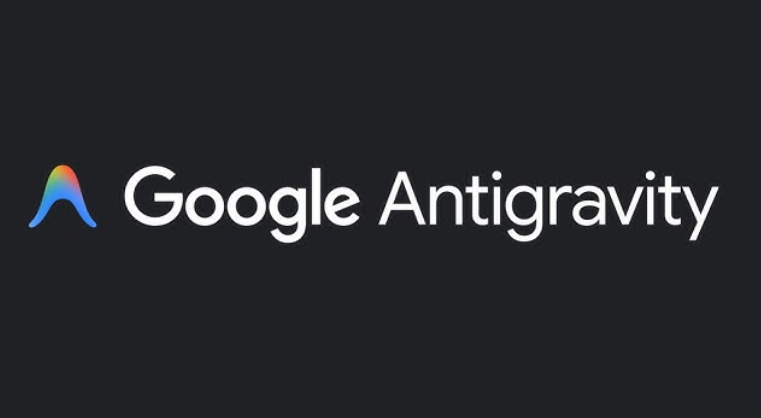Introduction: Google's Bold Entry into AI-Powered Development
Google has launched a game-changing weapon in the AI coding wars: Google Antigravity, an agentic development platform powered by the newly released Gemini 3 model. Released alongside Gemini 3 in November 2025, Antigravity represents Google's most ambitious attempt yet to reimagine software development for the AI era, directly competing with established players like Cursor and Claude Code.
Antigravity scored an impressive 1487 Elo on the WebDev Arena leaderboard and achieved 54.2% on Terminal-Bench 2.0, demonstrating strong tool use capabilities. More significantly, it achieved 76.2% on SWE-bench Verified, a benchmark measuring coding agent performance.
The platform's development story is particularly interesting: Google hired the Windsurf team, including CEO Varun Mohan, in July 2024 and licensed the technology for $2.4 billion. In under six months, this team has delivered what may be the most sophisticated agentic IDE on the market.
What Makes Antigravity Different: Agent-First Architecture
The Paradigm Shift in Development Tools
Unlike traditional AI coding assistants that operate as embedded features within IDEs, Antigravity elevates agents to a dedicated surface with direct access to the editor, terminal, and browser, allowing them to autonomously plan and execute complex, end-to-end software tasks while validating their own code.
Google describes Antigravity as enabling developers to operate at a higher, task-oriented level by managing agents across workspaces while retaining a familiar AI IDE experience at its core. This represents a fundamental reimagining of the developer-AI relationship: you become the architect, while intelligent agents handle implementation details.
Multi-Stage Agentic Workflow
In demonstration videos, Antigravity uses Gemini 3 to drive end-to-end agentic workflows, such as building a flight tracker app where the agent independently plans, codes the application, and validates execution through browser-based computer use. This showcases capabilities that go beyond simple code completion or chat-based assistance.
Key Technological Components
Antigravity ships with a powerful technology stack:
- Gemini 3 Pro: The reasoning engine driving agentic planning and code generation
- Gemini 2.5 Computer Use: Enables browser control and UI validation
- Nano Banana (Gemini 2.5 Image): Top-rated image editing model integration
- Multi-model support: Also includes access to Claude Sonnet 4.5 and GPT-OSS
Comprehensive Comparison: Antigravity vs Cursor vs Claude Code
Feature Comparison Table
| Feature | Google Antigravity | Cursor | Claude Code |
|---|---|---|---|
| Interface Type | Dedicated agent workspace + IDE | AI-enhanced IDE (VS Code fork) | Terminal-first CLI agent |
| Primary Approach | Agent-driven development | AI-assisted coding | Autonomous agentic coding |
| Base Technology | Gemini 3 Pro + multi-model | Multiple LLMs (Claude, GPT, etc.) | Anthropic Claude models |
| Context Window | Large (Gemini 3) | Varies by model | 200K tokens |
| Autonomous Execution | Full end-to-end workflows | Agent mode for larger tasks | Complete task automation |
| Browser Control | Native Gemini 2.5 Computer Use | Limited | Not available |
| Code Validation | Built-in verification loops | Manual review | Self-testing capabilities |
| Multi-file Operations | Excellent with agent coordination | Strong with Agent mode | Excellent with codebase understanding |
| IDE Integration | Standalone (VSCode-based) | Native (is an IDE) | CLI with IDE extensions |
| Learning Curve | Moderate (new paradigm) | Low (familiar VS Code) | Steep (terminal-based) |
| Pricing | Free during public preview | $20/month Pro plan | Token-based API pricing |
| Platform Support | MacOS, Windows, Linux | MacOS, Windows, Linux | MacOS, Windows, Linux |
| Web Search Integration | Via Gemini grounding | Available | Limited |
| Image Generation | Nano Banana built-in | Not available | Not available |
| Best For | Complex autonomous tasks | Daily coding workflows | Deep codebase reasoning |
Architectural Philosophy Comparison
Antigravity's Vision: “We want Antigravity to be the home base for software development in the era of agents,” with a focus on trust, autonomy, feedback, and self-improvement. The platform provides task-level abstractions rather than showing every implementation detail.
Cursor's Approach: Integrates AI deeply into a familiar VS Code environment, offering multiple interaction modes (tab completion, Cmd+K inline edits, Agent mode for larger features). Developers maintain control while AI accelerates execution.
Claude Code's Philosophy: Terminal-first automation where you describe desired outcomes rather than implementation steps. The AI plans multi-step tasks, executes them, and fixes problems autonomously through command-line interfaces.
Performance and Capabilities Analysis
Code Quality and Accuracy
According to developer reports, Claude Code produces less overall code reworks by close to 30% compared to Cursor, getting things right in the first or second iteration. However, Antigravity's integration of Gemini 3's advanced reasoning capabilities may challenge this advantage.
Gemini 3 scored 81% on MMMU-Pro and 87.6% on Video-MMMU, achieving higher marks than Claude Sonnet 4.5 and ChatGPT 5.1, suggesting superior reasoning capabilities that should translate into code quality improvements.
Context Understanding
Antigravity: Benefits from Gemini 3's multimodal reasoning and extended context capabilities, with exceptional zero-shot generation that handles complex prompts and instructions to render richer, more interactive web UI.
Cursor: Indexes entire projects into embeddings, creating semantic maps of codebases. It also indexes all merged PRs from repository history, including GitHub comments and review feedback.
Claude Code: Offers a 200K token context window with support for extended reasoning during responses, using agentic search to scan, map, and interpret entire codebases.
Speed and Efficiency
Early Antigravity users report mixed experiences regarding speed. Many users point to errors and slow generation times in initial testing, which is typical for public preview releases. However, the underlying Gemini 3 model demonstrates strong performance in benchmarks.
Cursor generally offers faster iteration for quick edits and inline completions, while Claude Code and Antigravity excel at complex, multi-step autonomous tasks where upfront planning time pays off.
Use Case Analysis: When to Choose Each Tool
Choose Google Antigravity When:
- Building complete applications from high-level descriptions
- You want autonomous agents handling end-to-end workflows
- Browser-based validation and testing are critical
- Working on projects requiring visual UI generation
- You need integrated image editing capabilities
- Exploring cutting-edge agentic development paradigms
- Budget allows experimentation (free during preview)
Choose Cursor When:
- You prefer working within a familiar IDE environment
- Daily coding involves frequent context switching
- You want balance between AI assistance and manual control
- Team collaboration features matter
- Predictable monthly pricing fits your budget ($20/month)
- Coming from VS Code and want minimal learning curve
- Need strong extension ecosystem compatibility
Choose Claude Code When:
- Working on complex infrastructure or backend systems
- You prefer terminal-based workflows
- Deep codebase reasoning is more important than visual feedback
- Willing to invest in learning a new interaction paradigm
- Cost flexibility with token-based pricing works better
- Projects benefit from Anthropic's Claude reasoning capabilities
- Autonomous task execution without GUI is preferred
Pricing and Accessibility Comparison
Google Antigravity
Free during public preview, though users report rate limits that refresh every five hours. Future pricing has not been announced, but will likely integrate with Google Cloud and Google One AI Premium subscriptions.
Cursor
- Free tier: Limited AI features
- Pro plan: $20/month with 500 premium model requests
- Team plans: Available with additional collaboration features
- For comparison, one developer spent approximately $2 worth of their monthly Cursor subscription on a set of coding tasks
Claude Code
- Free tier: Basic access with limitations
- Pay-as-you-go: Token-based API pricing
- Pro plans: Faster responses and higher context limits
- The same coding tasks cost approximately $8 with Claude Code, making it roughly 4x more expensive than Cursor for that particular workload
Real-World Developer Feedback
Antigravity Reception
The platform is still in early public preview, with feedback focusing on its innovative agent-first architecture. The Antigravity team is blunt in their positioning: “you've been elevated to a manager of agents,” with UI clearly built for pair programming alongside coding agents.
Early users note that Antigravity provides context on agentic work at a task-level abstraction, with necessary and sufficient artifacts and verification results to build user trust.
Cursor Strengths
Developers appreciate that Cursor feels like home for those coming from VS Code, with seamless AI feature integration. Changes appear in the editor in real-time for review and adjustment.
Many developers value Cursor for its ability to build directly in GitHub repos while maintaining flow, making it excellent for rapid prototyping and small-to-medium features.
Claude Code Advantages
Claude Code is remarkably better at returning good code and produces code that follows existing patterns with higher modularity by default.
The key differentiator is the interaction model: you don't tell Claude Code what changes to make (though you can), but rather what to accomplish. It plans multi-step tasks, executes them, checks results, and fixes problems autonomously.
Integration Ecosystem and Compatibility
Antigravity Integrations
Available in Google AI Studio, Vertex AI, Gemini CLI, and also accessible through third-party platforms like Cursor, GitHub, JetBrains, Manus, Replit and more. This suggests Google is building both a standalone platform and API access for existing tools.
Cursor Ecosystem
Built on VS Code, inheriting its massive extension marketplace. Integrates with major Git platforms, supports all VS Code extensions, and works with various AI model providers.
Claude Code Compatibility
Supports shell piping and scripting, can be embedded into build workflows, and offers IDE integrations to avoid locking users into specific environments.
The Future of AI-Powered Development
Antigravity's Potential
Google launched Gemini 3 across its entire ecosystem simultaneously, including Gemini app, search services, Gemini API, AI Studio, and Google Cloud's Vertex AI. This integrated approach gives Antigravity potential distribution advantages that neither Cursor nor Claude Code can match.
One of the most exciting aspects is Gemini 3's generative UI capability—dynamically creating custom presentations with layout, format, and UX based on prompts. This feature could revolutionize rapid prototyping workflows.
Industry Trajectory
The software industry appears headed toward agent-driven development, though Google's IDE at least offers options to choose between “agent-driven development” (autonomous mode) and “agent-assistant development” (collaborative mode).
The release of Gemini 3 comes just seven months after Gemini 2.5, and within a week of OpenAI's GPT 5.1 release and two months after Anthropic's Sonnet 4.5—a reminder of the blistering pace of frontier model development.
Conclusion: A New Era of Agentic Development
Google Antigravity represents a bold reimagining of software development for the AI age. While Cursor excels at integrating AI into familiar workflows and Claude Code provides terminal-first autonomous coding, Antigravity introduces a third paradigm: agent-first development with browser-based verification and multi-modal capabilities.
Key Takeaways:
- Architectural Innovation: Antigravity's dedicated agent workspace with direct browser, editor, and terminal access is genuinely novel
- Performance Credentials: Strong benchmark scores suggest competitive technical capabilities
- Multi-Model Support: Access to Gemini 3, Claude Sonnet 4.5, and GPT-OSS provides flexibility
- Early Stage: Public preview status means bugs and performance issues are expected
- Complementary Tools: Many developers may use multiple tools strategically rather than choosing just one
The “best” choice depends on your development style, project requirements, and willingness to adapt to new paradigms. Antigravity shows the most promise for truly autonomous, end-to-end application development, but Cursor remains unbeatable for familiar IDE workflows, and Claude Code continues to excel at deep codebase reasoning tasks.
As the AI coding landscape evolves at breakneck speed, the real winner may be developers themselves—now equipped with multiple powerful tools to choose from based on specific needs rather than being locked into a single approach.
Ready to explore next-generation AI development? Google Antigravity is available now for free during its public preview period for MacOS, Windows, and Linux.









